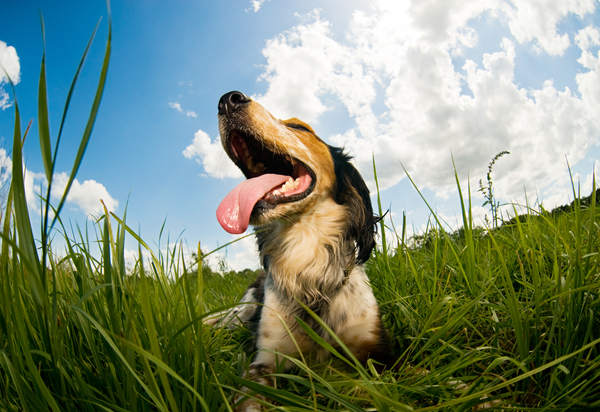
Why Dogs Are Vulnerable to Heat Stroke
Unlike humans, dogs can’t sweat enough to cool off – instead, they release heat through panting. Their decreased ability to cool themselves means they’re more susceptible to overheating in warm environments, especially those that have poor ventilation like parked cars or yards with no breeze. Likewise, dogs are prone to overheating when they are active. In warm weather, a dog’s internal temperature can increase quickly. If their temperature climbs above 106°F (41°C) they can suffer serious organ damage or death.
Dogs with short noses (brachycephalic breeds), such as pugs and French bulldogs, are at even higher risk of overheating, since their face shape reduces the effectiveness of their normal cooling mechanism. Other dogs at increased risk include senior dogs, dogs with heavy dark coats, overweight dogs, and dogs with chronic disease like heart disease.
Spotting Heat Stroke: Key Warning Signs
- Very heavy or rapid panting
- Dry, sticky, pale, bluish, or bruised gums
- Lethargy, confusion, staggering
- Drooling or vomiting
- Bloody diarrhea
- Seizures or collapse
Heat stroke is an emergency – if you see any of these signs, don’t hesitate to help your dog.
Immediate First-Aid Steps
- Cool your dog quickly – but safely
Gently wet your dog with cool (not icy) water. Fan air over them or sit them in front of an air conditioner or cool breeze. - Rush to the vet
Even if your dog seems to be improving, they can develop internal damage later. Bring them in right away so your veterinarian can assess their health status and need for additional care.
What Vets Do in the Clinic
- Intravenous (IV) fluids to restore circulation and cool the internal body temperature
- Oxygen therapy
- Active temperature monitoring and maintenance to prevent over-cooling
- Medications to support organs, prevent clotting, manage pain/seizures, and protect the gut
Your dog’s chance of survival is best when quick action is taken; delays may lead to permanent organ damage or death.
Prevention is Your Best Defense
- Never leave your dog alone in a car – even with windows cracked.
- Limit walks to the cooler early morning or evening hours.
- Provide shade, fresh water, fans, or cooling mats outside.
- Avoid intense play or exercise in heat, especially if it’s humid or there is poor airflow.
After Heat Stroke: Long-Term Care
Dogs that survive heatstroke may have damage to their “internal thermostat,” making them more likely to suffer heat stroke again. Their owners need to be extra cautious during hot temperatures.
Heatstroke in dogs isn’t just serious – it can be fatal, and sometimes the damage appears hours later. Spot the warning signs early. Act fast with cooling and a vet visit. Even better – prevent it entirely, with careful planning during hot days. A little preparation each summer keeps your pup safe and happy.
Stay cool out there – and make sure your dog always has shade and an extra bowl of fresh water!
